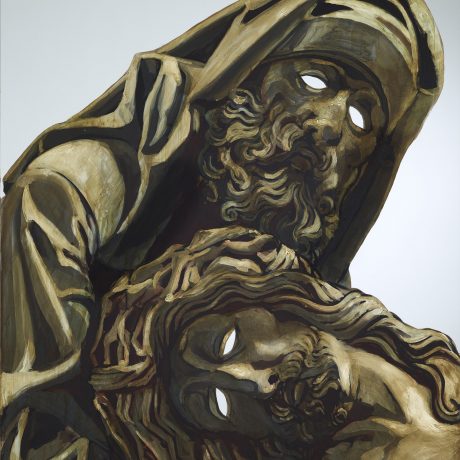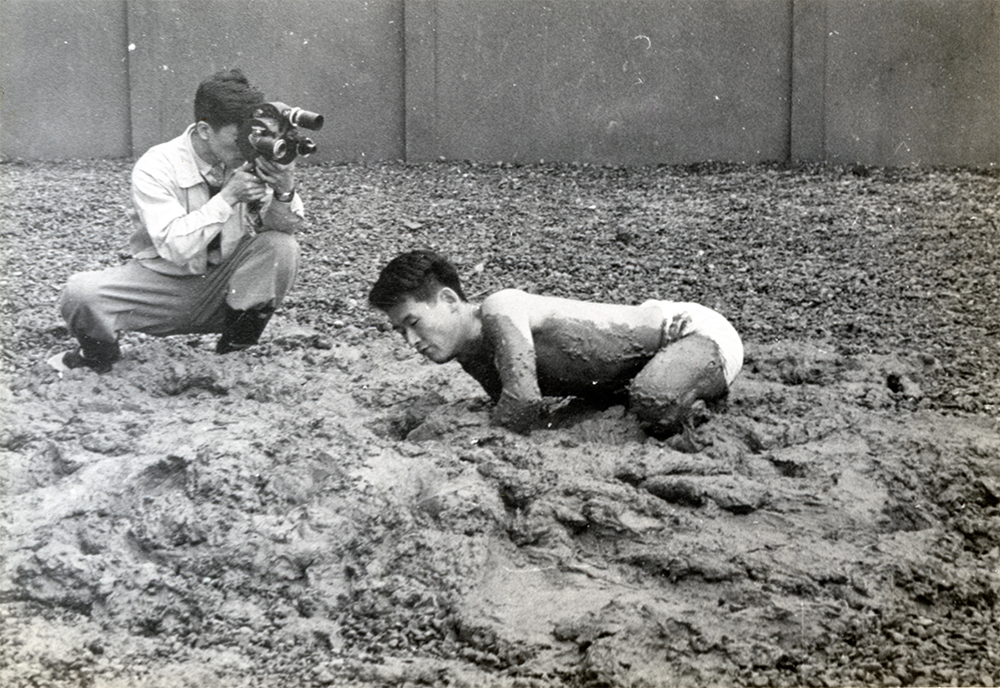
Shiraga Kazuo, Challenging Mud, 1955. Courtesy Amagasaki Cultural Foundation
Under the Influence invites artists to discuss a work that has had a profound impact on their practice. In this edition, painter, writer and performance artist Jade Montserrat recalls the effect that Japanese avant-garde art collective Gutai’s performance art piece Challenging Mud (in which an artist wearing only a pair of white shorts enters a mound of wet mud, rocks and clay and creates shapes with his body) had upon her work.
I first saw an image of Gutai’s 1955 performance Challenging Mud (Doro ni idomu) in Alexander Munroe’s book Japanese Art after 1945: Scream Against the Sky. I visited Hayward Gallery in 2002 and the book was in a discount bin. I felt I had a bargain, that I was entering into a whole new terrain: the history of art from a non-western perspective.
I was studying the history of art at The Courtauld and had already connected the dots between Guati and the abstract expressionists. The abstract expressionists were so prominent in the course. At the time there was a big Barnett Newman exhibition at Tate. Challenging Mud took a departure from the narrative. It allowed me to question the difference, for the first time. I have been constantly enthralled by every image in this book since, but Challenging Mud has definitely influenced my own work the most.
I was interested in that connection between the body and the earth, that raw dynamic energy. The idea that you can make painterly marks or some sort of sculpture when you are intimately connected with the materials was completely new and radical to me. I found the proposition almost intimidating.
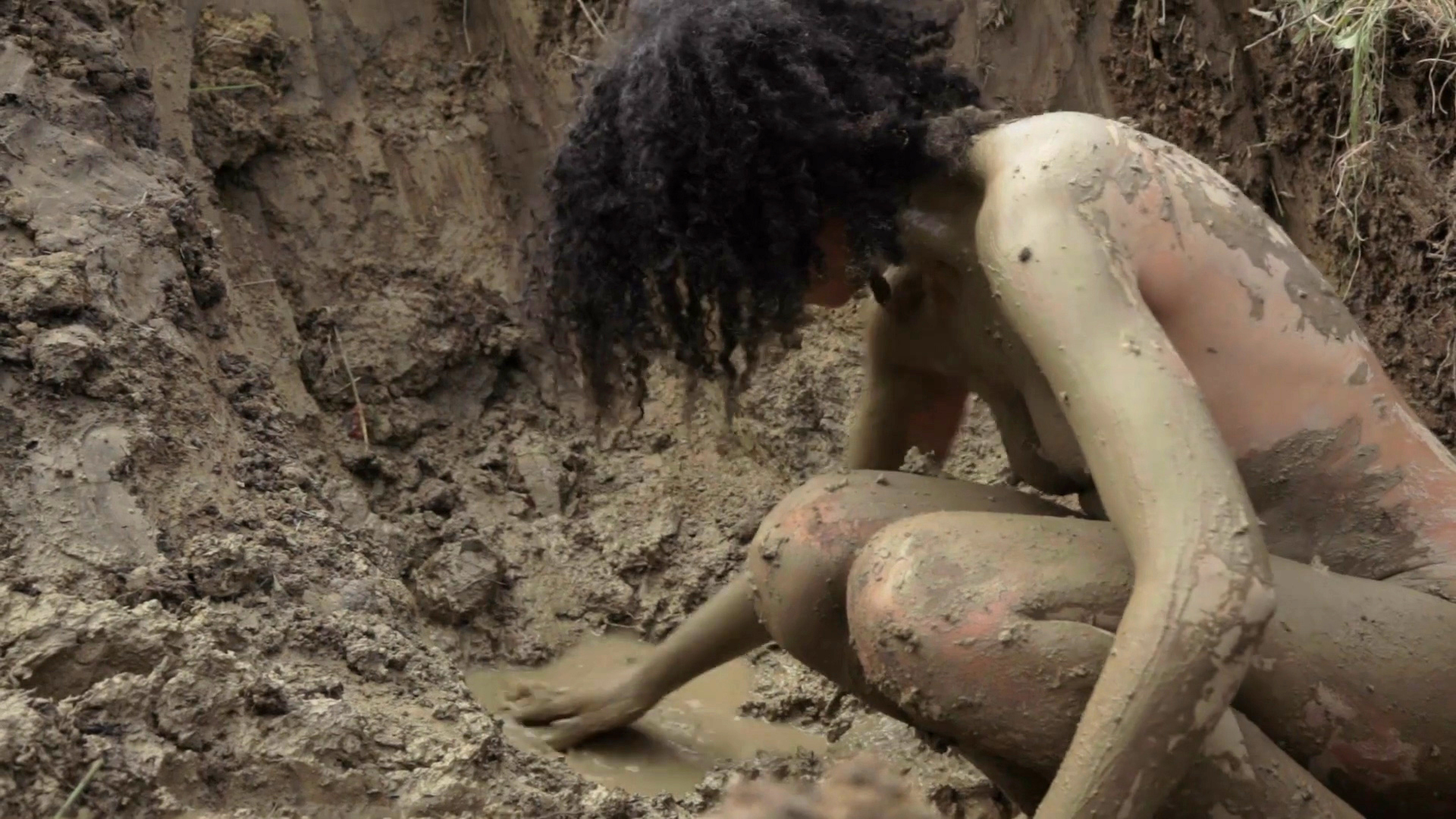
The words themselves, “challenging mud”, change meaning depending on where you put the emphasis. Is the mud itself challenging? Or is the body challenging the mud? It could also point to challenges with mud, such as erosion. I like the play of words there. It allows one’s thinking to veer off.
Gutai would constantly go back to that childlike state of pure imagination. Challenging Mud connected me with childhood as well. I grew up in an isolated area of Yorkshire where there were no immediate neighbours. It was off grid. I would look for clay as a child, not with that same freneticism you see in the performance.
“Challenging Mud took a departure from the narrative. It allowed me to question the difference, for the first time”
Gutai were anti-intellectual. They felt that they weren’t responding to the political environment. Part of their agenda was to connect bodies with material and make a new type of art. That’s why we consider Gutai avant-garde. Gutai has influenced my politics, whatever their intention. Their work reads to me as political. It allows me to speak from a place that I am observing.
My politics are wedded to the environment I grew up. It’s a Conservative bastion and I was indoctrinated by right-wing politics, growing up as the only brown girl in an exclusively white environment. It wasn’t easy, I knew I was being suppressed from talking about things that were affecting me and felt uncomfortable and wrong. But I realised if I deviated from it, I would be truly alone. Then at university I was thankfully exposed to and befriended by people with extremely left-wing, liberal politics.
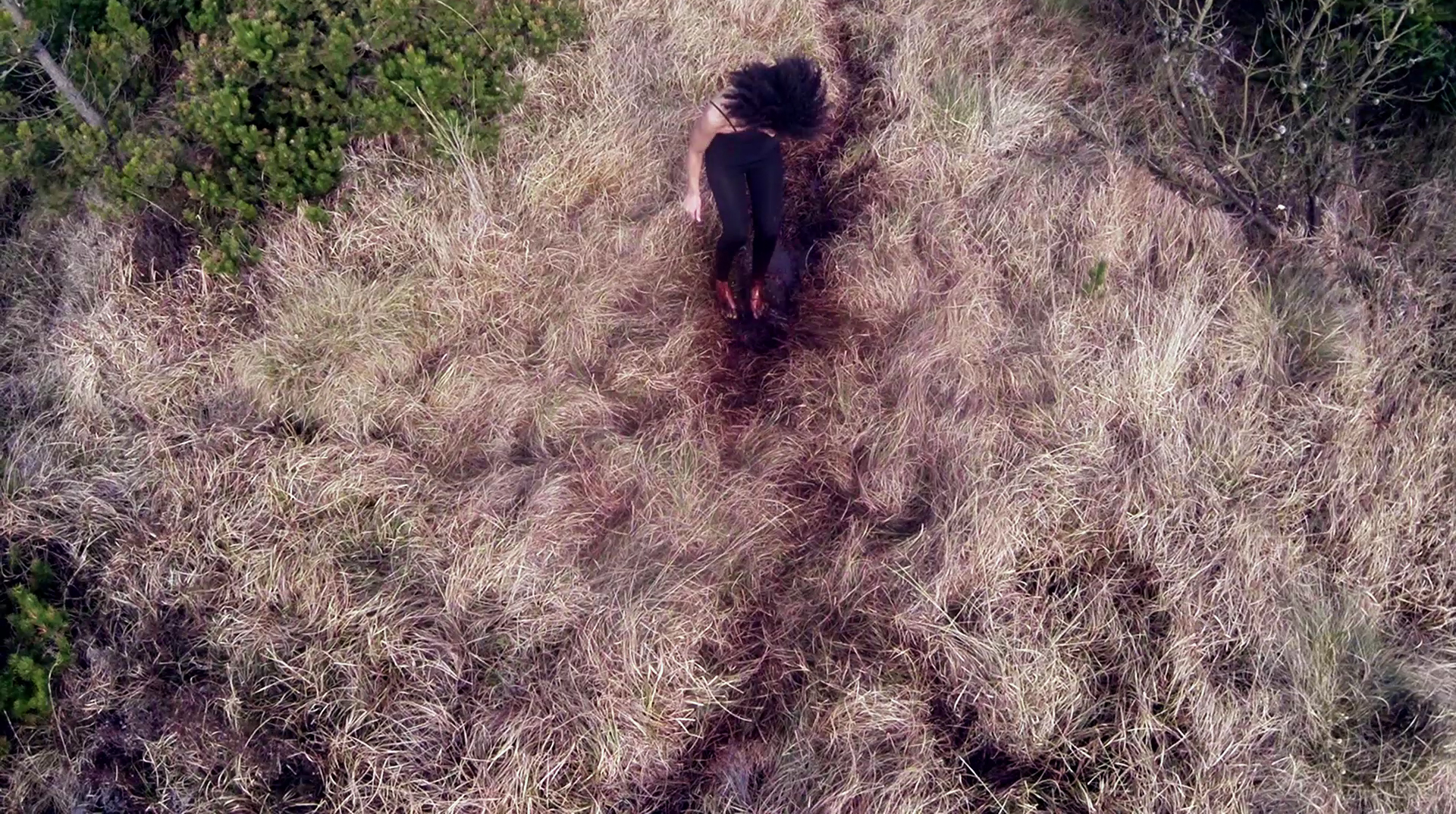
Broadly, Challenging Mud has influenced the pedagogical enquiries I make. I want to note Ignorant Art School, a project conceived by Shophia Hao at Cooper Gallery, Dundee, which I am an associate artist for. It looks back at art education in the UK. Guati itself, led by Yoshihara Jirō, was also a school and a way of thinking and doing. The value of art within communities influences the work I make as an associate artist and a participant in the Ignorant Art School.
Gutai’s happening lasted for a few weeks for 24 hours a day.
Ignorant Art School’s recent event in Dundee’s botanical gardens ran for 12 hours straight. Challenging Mud pointed to the appreciation of art of making and bringing our bodies together, gently suggesting other ways of doing things in space. It’s an important consideration when we think about the legacy of art schools and what we want to create in the future, which I hope is the antithesis of the corporate machines that we see now.
“Gutai has influenced my politics. Their work reads to me as political. It allows me to speak from a place that I am observing”
I made a video work called Clay, which shows me digging with my hands and immersing myself in raw material. I recently exhibited it at Two Temple Place in a show called Body, Vessel, Clay, which has since toured to York Art Gallery (the exhibition runs until 18 September). That is a direct reference to Gutai’s work. For me personally it was a meditative experience making the performance, but there was also a level of heightened emotion and physical experience.
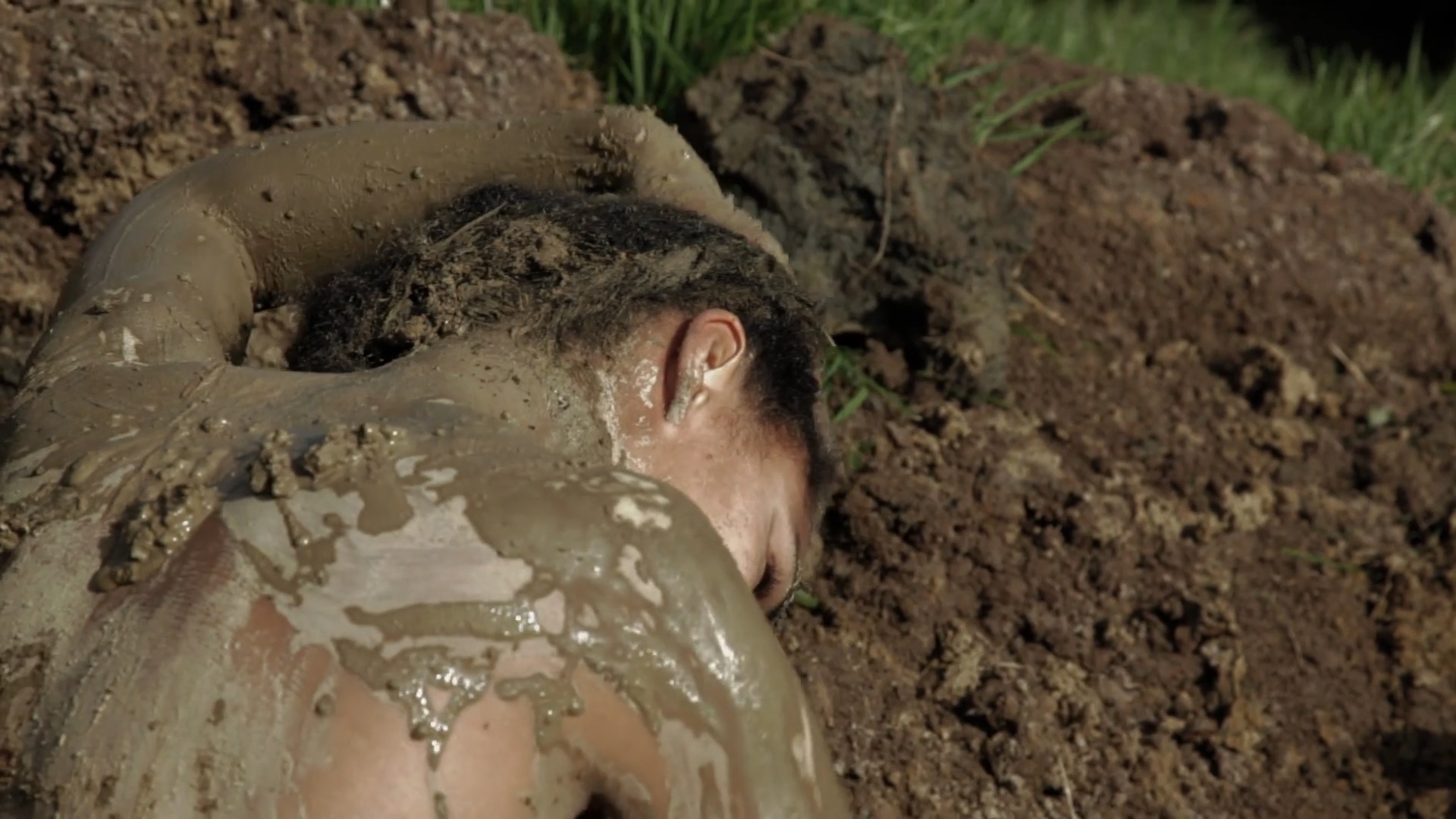
I was naked in a field in a pit of mud. I think it was late October, maybe even early November. I took my collaborators Webb-Ellis to the site, imagining I was going to make an entirely different work. The mud pit was already made and once we were there it was very clear I needed to work with the mud and clay while it was available. It spoke to us rather than being something we previously conceived. Subconsciously, I know I was thinking about Gutai.
Challenging Mud has to be thought of in the context of the first Gutai event of this scale, Experimental Outdoor Exhibition of Modern Art to Challenge the Mid-Summer Sun [in 1955]. These pre-empted happenings that occur all the time now. Flash mobs are happenings, they’re just often commercialised. Gutai pioneered that approach to bringing art into the outdoors. This performance had so much to say about the actual materials, about how we connect with our earth and soil, in the context of stewarding in a future where we are not separated from our environments. I think that is an important legacy.
Emily Steer is Elephant’s editor
Jade Montserrat has collaborated on Celine’s AW22 menswear collection
Under the Influence
Discover the connections between today’s creatives and the artists who helped shape their work
READ MORE
